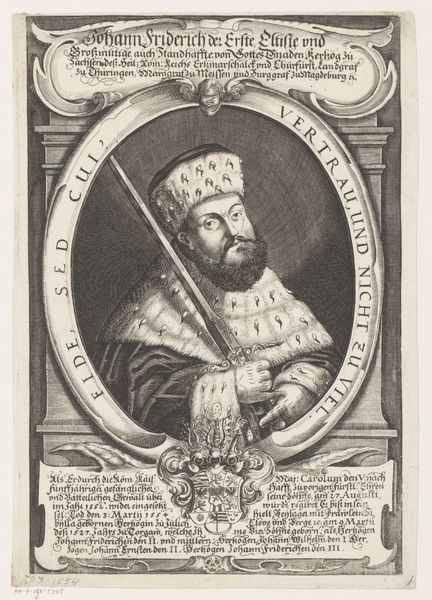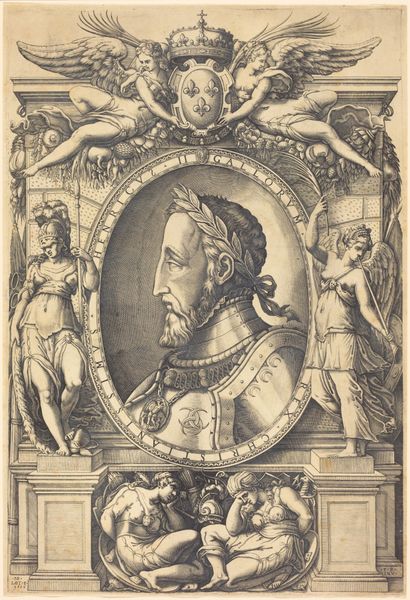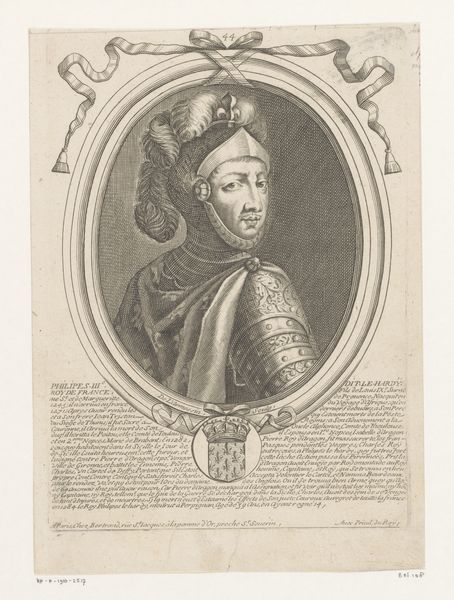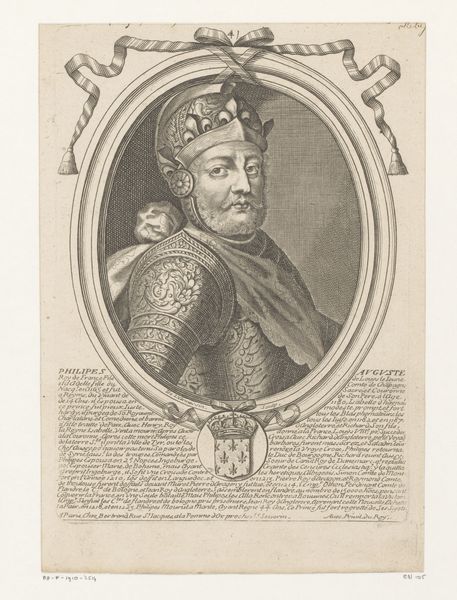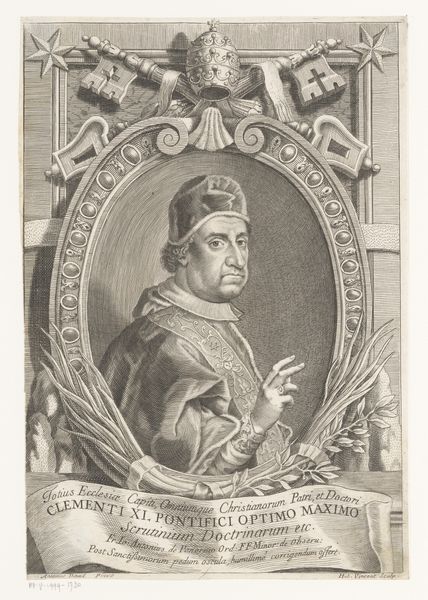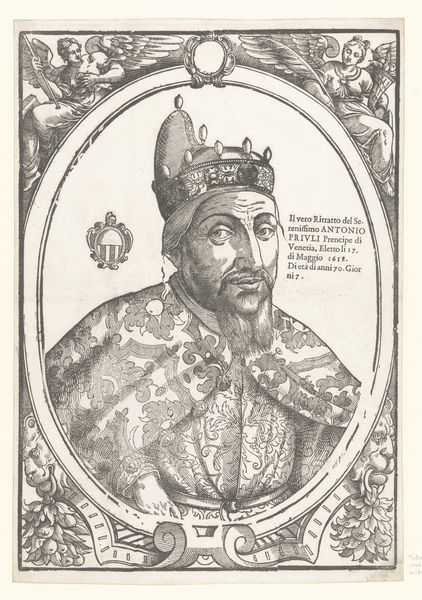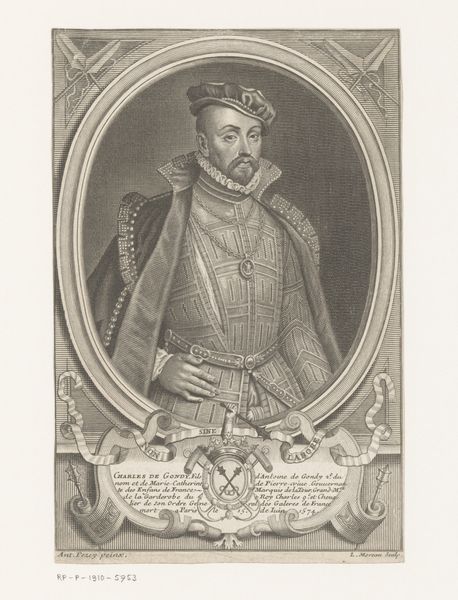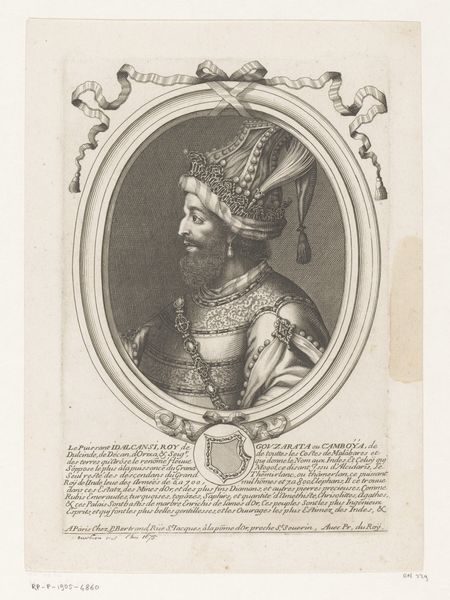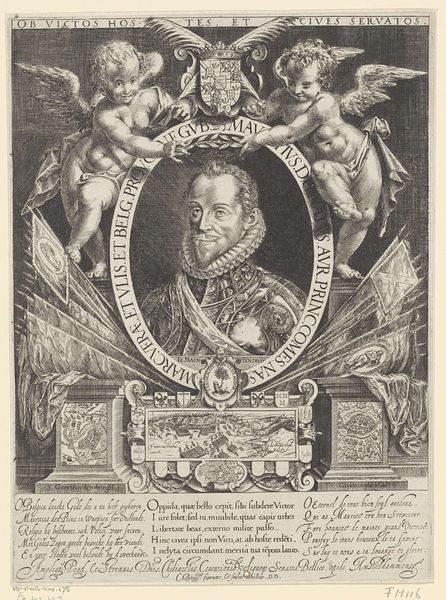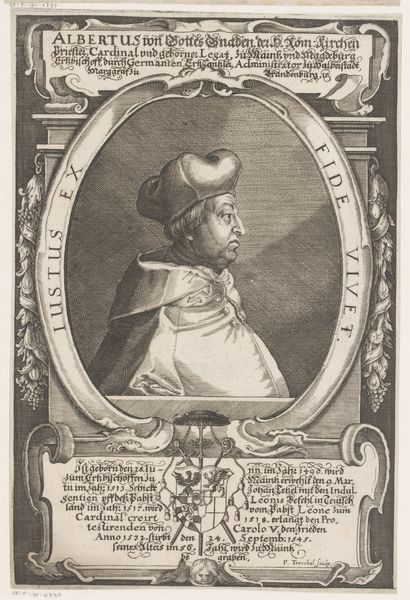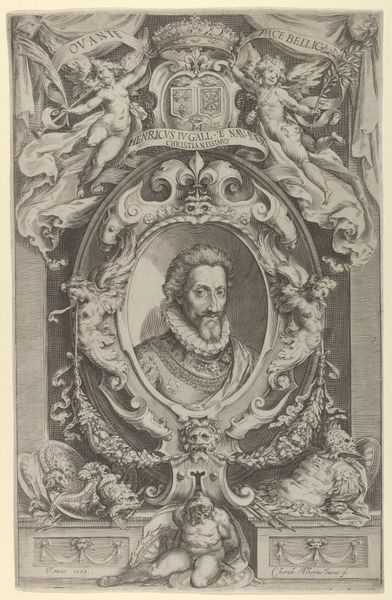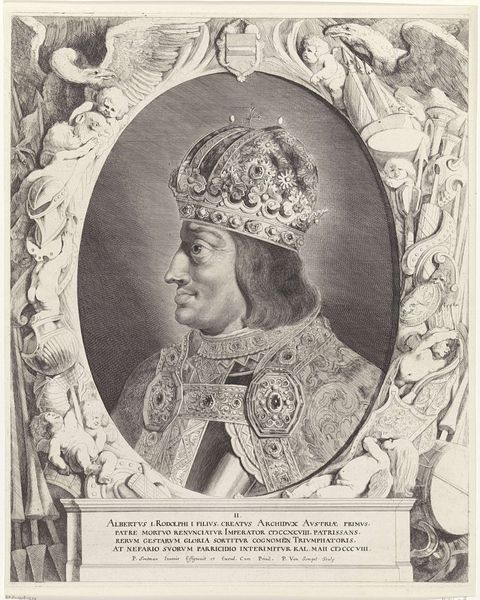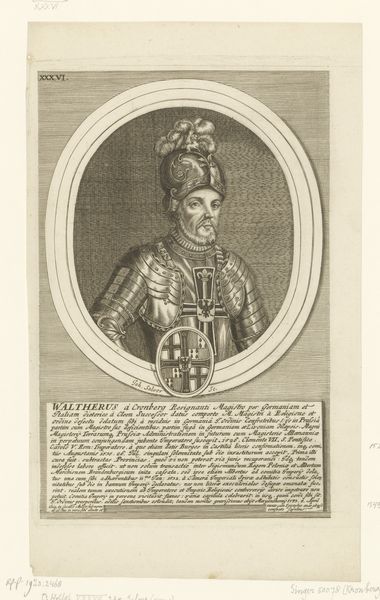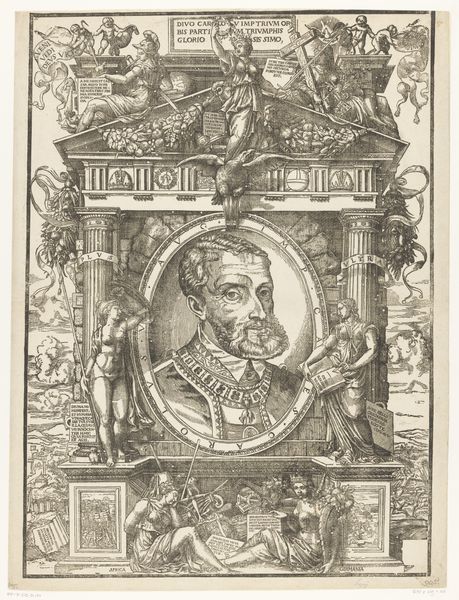
engraving
#
portrait
#
baroque
#
old engraving style
#
caricature
#
history-painting
#
academic-art
#
engraving
Dimensions: height 262 mm, width 204 mm
Copyright: Rijks Museum: Open Domain
This print, depicting Gábor Bethlen at the age of 40, was made in 1620 by Lucas Kilian. It’s an engraving, a process by which lines are incised into a metal plate, which is then inked and printed. Look closely, and you can see the tremendous amount of labor that went into this image. Every line had to be cut by hand using a tool called a burin, which requires enormous skill. Consider how the process affects the appearance. The precision of line lends a sharp clarity to the portrait. The evenness of tone, achieved by subtle gradations, allows Kilian to render the textures and the opulence of Bethlen's attire, emphasizing the social status of the sitter. Engraving was closely tied to the rise of capitalism. Prints like these could be made in multiples and distributed widely, acting as a form of early media. In this case, the image served to promote Bethlen's power and prestige. So, while the print may seem like a traditional artwork, it's also deeply embedded in the social, political, and economic forces of its time.
Comments
No comments
Be the first to comment and join the conversation on the ultimate creative platform.
